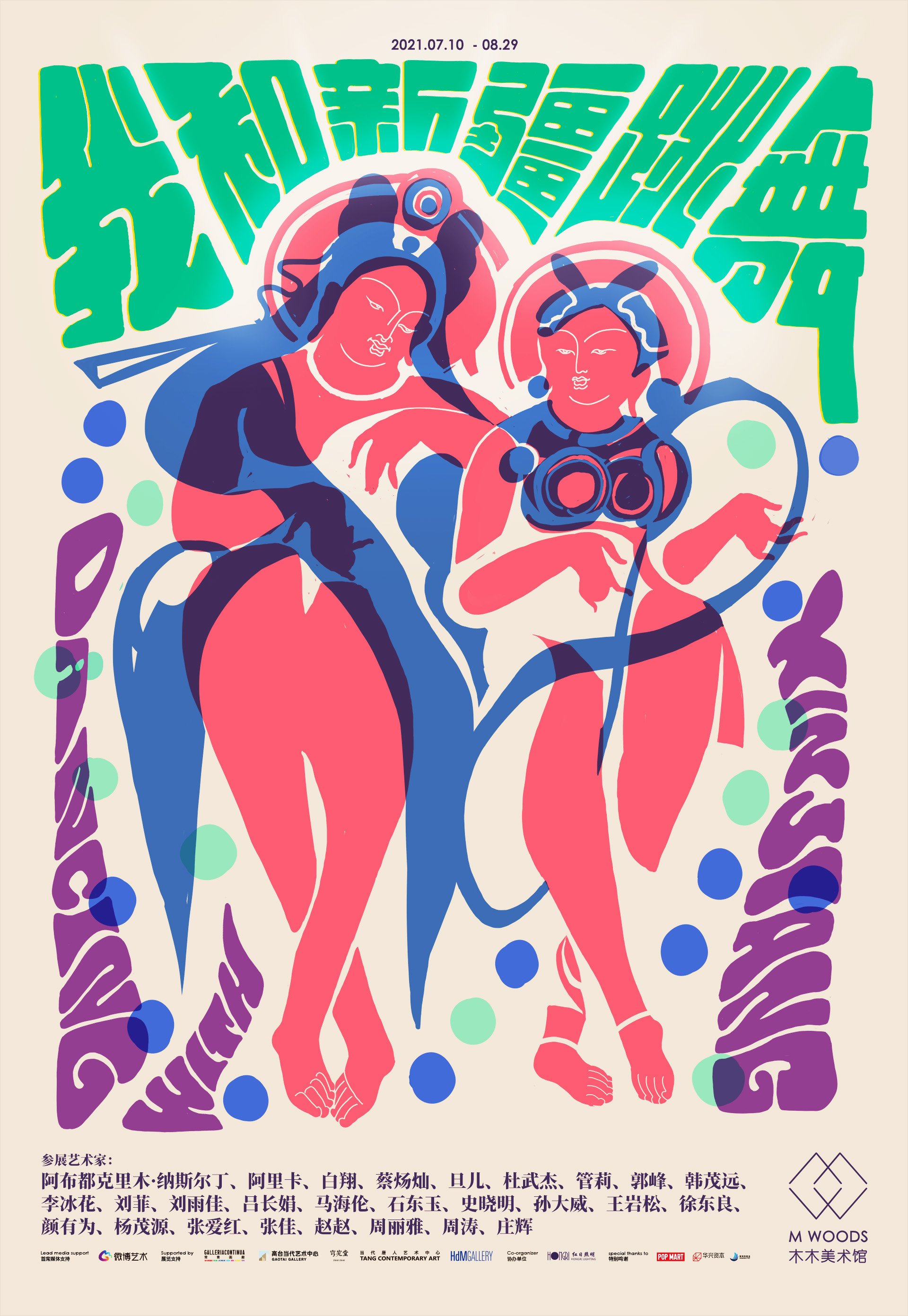
Dancing with Xinjiang
2021.7.10-2021.8.29
M WOODS(798)
We are very pleased to announce that M WOODS 798 will hold a group exhibition titled ‘Dancing with Xinjiang’ this summer, in collaboration with the Chinese National Academy of Arts.

Located in the heart of the Eurasian continent, Xinjiang was an important passage along the ancient Silk Road, which spanned from China's ancient capital Chang 'an to the eastern coast of the Mediterranean Sea. Through the ages, Xinjiang has been a place of convergence and exchange among Western and Oriental civilizations. Diverse cultures gather here, forming a grandiose ‘dance’ of profound historical significances.
For thousands of years, painters, artisans, musicians, dancers, and scholars, generation after generation, formed the exuberance of ancient Xinjiang arts and cultures. Their names may have been obscured by the oblivion of history, yet the lustrous colours, vivid figures, and graceful melody and postures remain in material forms, which still move and inspire people today. While contemplating the splendid past, contemporary artists also have their eyes on the current development of Xinjiang.
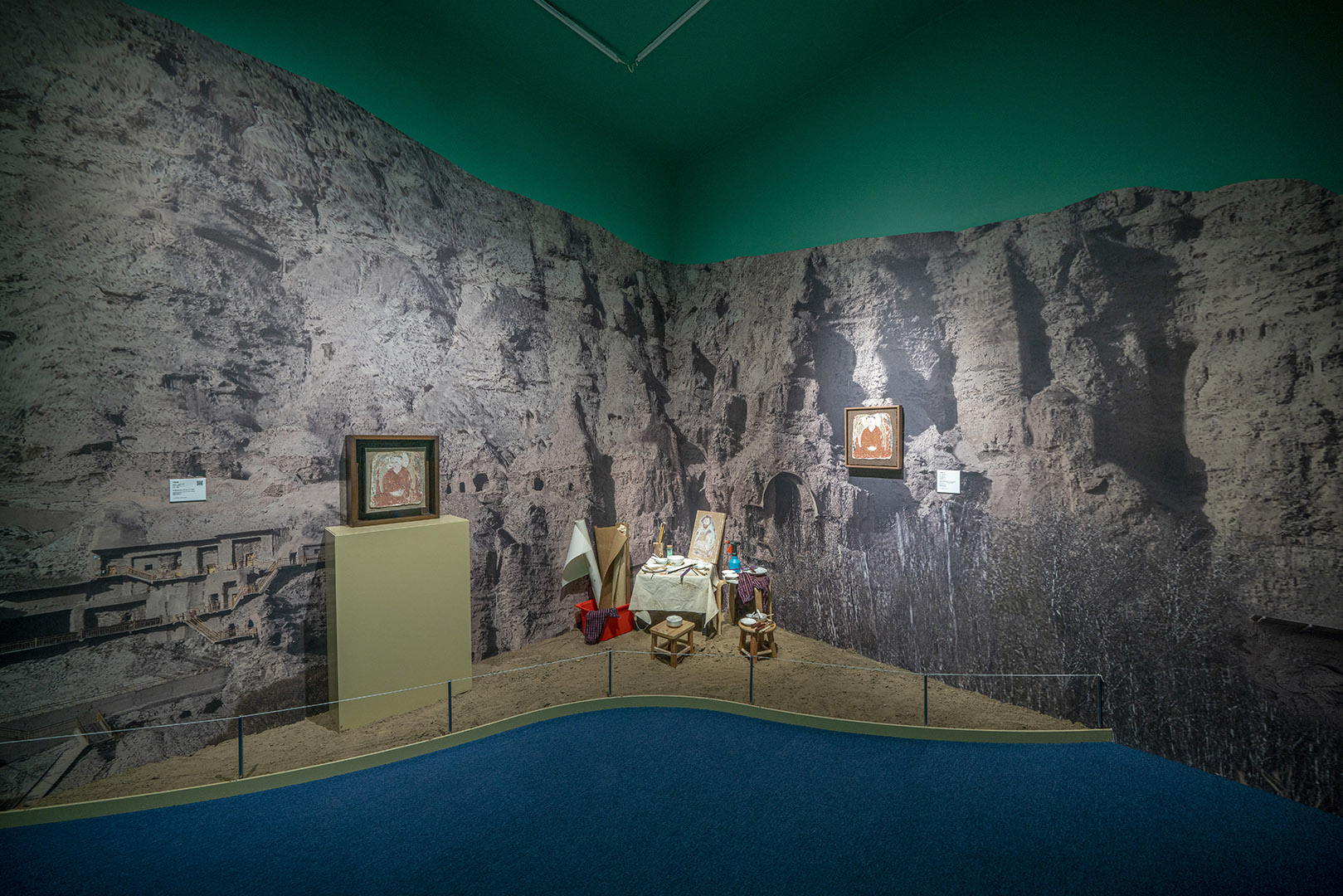
The exhibition will present Xinjiang mural copies made by over 30 archaeologists and art researchers, as well as works by contemporary artists related to the region, in addition to original pieces of ancient Xinjiang art from the M Woods collection. The exhibition aims to explore how the histories and cultures of Xinjiang, together with its current society, shape the development of contemporary Chinese art. It puts under the spotlight multidimensional, multifaceted discourses on Xinjiang formulated by contemporary artists, art researchers and art institutions over the years.
From a contemporary standpoint, this exhibition sets out to explore, reflect, and respond to Xinjiang’s past and present from various perspectives. Starting from the perspective of archeologists and art researchers, the exhibition surveys and presents selected mural copies and research done by generations of scholars from the 1940s to the present, such as Han Leran, Zhang Aihong, as well as researchers from the Gongbi Painting Institute at the Chinese National Academy of Arts. These works are not simple reproductions of grotto art but are born out of the copyist’s individual subjectivity, infused with personal emotions and even creative interpretation.
![]()
The various copying methods chosen by the researchers also reflect the shifts in thinking and practice in Xinjiang grotto mural conservation across time. The exhibition also features works by contemporary artists such as Alika, Dan 'er, Liu Yujia, Ma Hailun, Sun Dawei, Yang Maoyuan, Zhao Zhao, Zhuang Hui. Their works either offer a re-examination of Xinjiang’s historical memories and cultural traditions, or strip away all relevant contexts to draw inspiration from purely aesthetic and formal dimensions. Other works also focus on the current social climate of Xinjiang through in-depth understanding of the individuals living in it. These contemporary works will be spatially and conceptually juxtaposed with the mural copies in the gallery space, making possible a dialogue across spacetime between ancient Xinjiang art and contemporary artistic practices.
![]()
Art institutions also play an important role in this vibrant ‘dance’. The exhibition explores the role and value of museums nowadays in the preservation, conservation, and propagation of artistic and cultural heritage: while dedicated to collecting, researching, and exhibiting cultural relics, M WOODS builds a platform for communication and exchange to materialise the continuance and resonance of history in contemporary art practices through looking back into the past.
![]()
![]()
![]()
About the Gongbi Painting Institute at the Chinese National Academy of Arts
The Gongbi Painting Institute at the Chinese National Academy of Arts is the only national academic institution integrating research, teaching and creation of gongbi (fine brush) painting in China, supported by abundant professional talents and teaching resources. Through cutting-edge academic research, it aims to endorse artistic classics, propel innovative development of contemporary gongbi painting, and build a systematic, scientific, and comprehensive platform for scholarly and artistic exchange. The institute is now under the leadership of Zhang Jian with He Jiaying being its former director.
Gongbi is an important name card for Chinese art and has been studied and appreciated domestically and internationally. The Gongbi Painting Institute will increase the width and depth of international art exchanges and promote gongbi painting in international cultural discourses. Through research and mutual learning, the Institute also aims to enrich the artistic expression of contemporary gongbi painting, thereby expediting its pluralistic development.
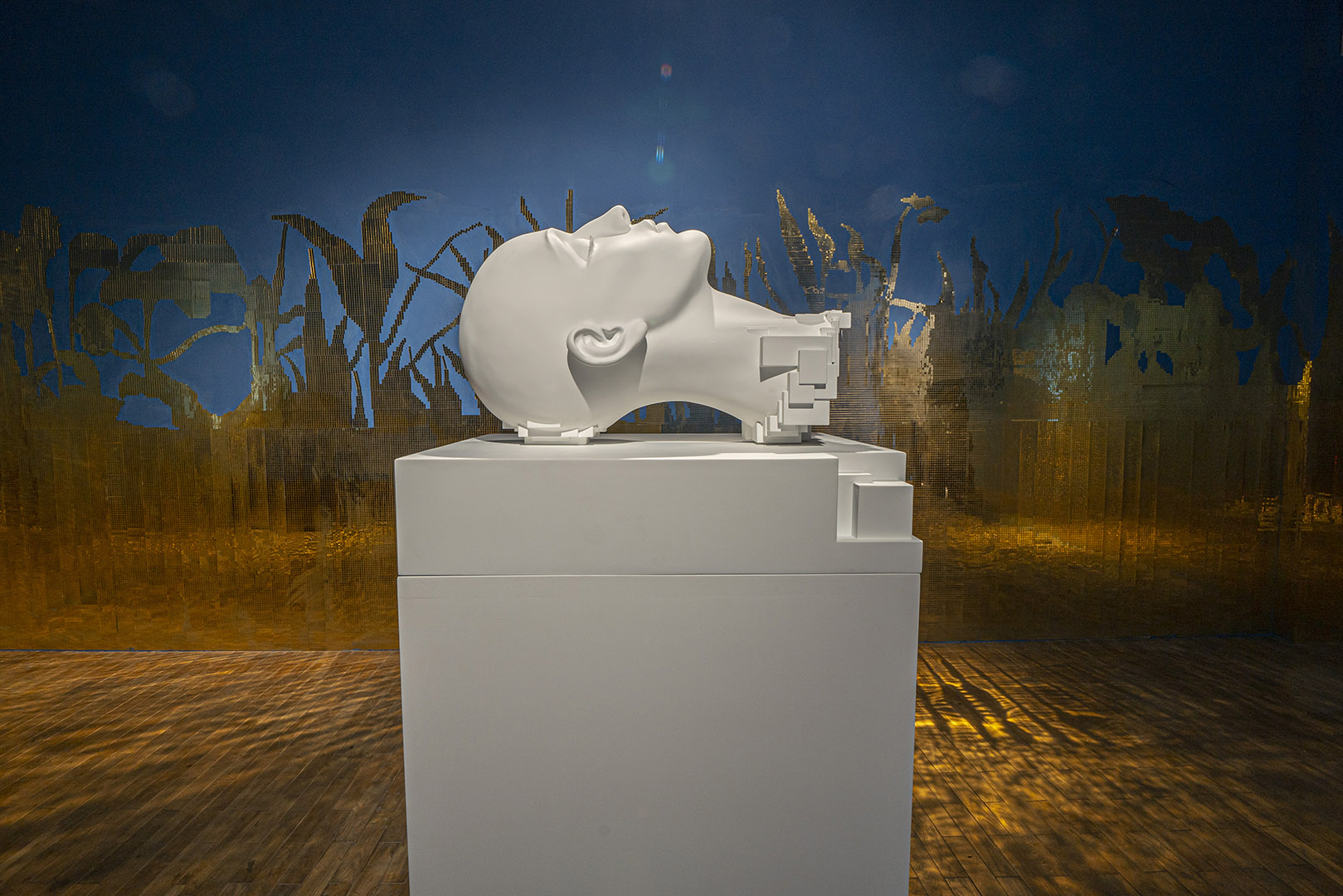
The various copying methods chosen by the researchers also reflect the shifts in thinking and practice in Xinjiang grotto mural conservation across time. The exhibition also features works by contemporary artists such as Alika, Dan 'er, Liu Yujia, Ma Hailun, Sun Dawei, Yang Maoyuan, Zhao Zhao, Zhuang Hui. Their works either offer a re-examination of Xinjiang’s historical memories and cultural traditions, or strip away all relevant contexts to draw inspiration from purely aesthetic and formal dimensions. Other works also focus on the current social climate of Xinjiang through in-depth understanding of the individuals living in it. These contemporary works will be spatially and conceptually juxtaposed with the mural copies in the gallery space, making possible a dialogue across spacetime between ancient Xinjiang art and contemporary artistic practices.
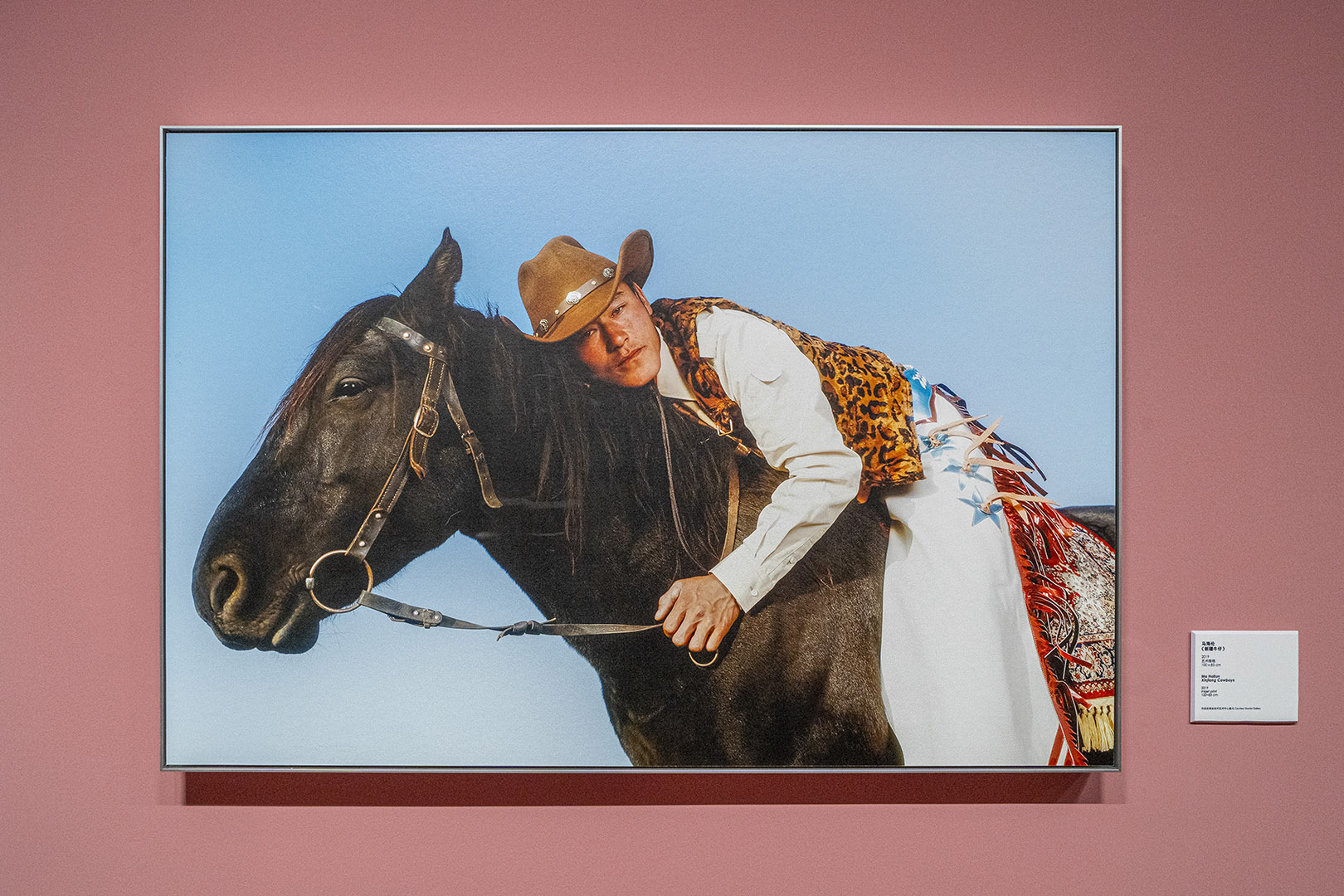
Art institutions also play an important role in this vibrant ‘dance’. The exhibition explores the role and value of museums nowadays in the preservation, conservation, and propagation of artistic and cultural heritage: while dedicated to collecting, researching, and exhibiting cultural relics, M WOODS builds a platform for communication and exchange to materialise the continuance and resonance of history in contemporary art practices through looking back into the past.
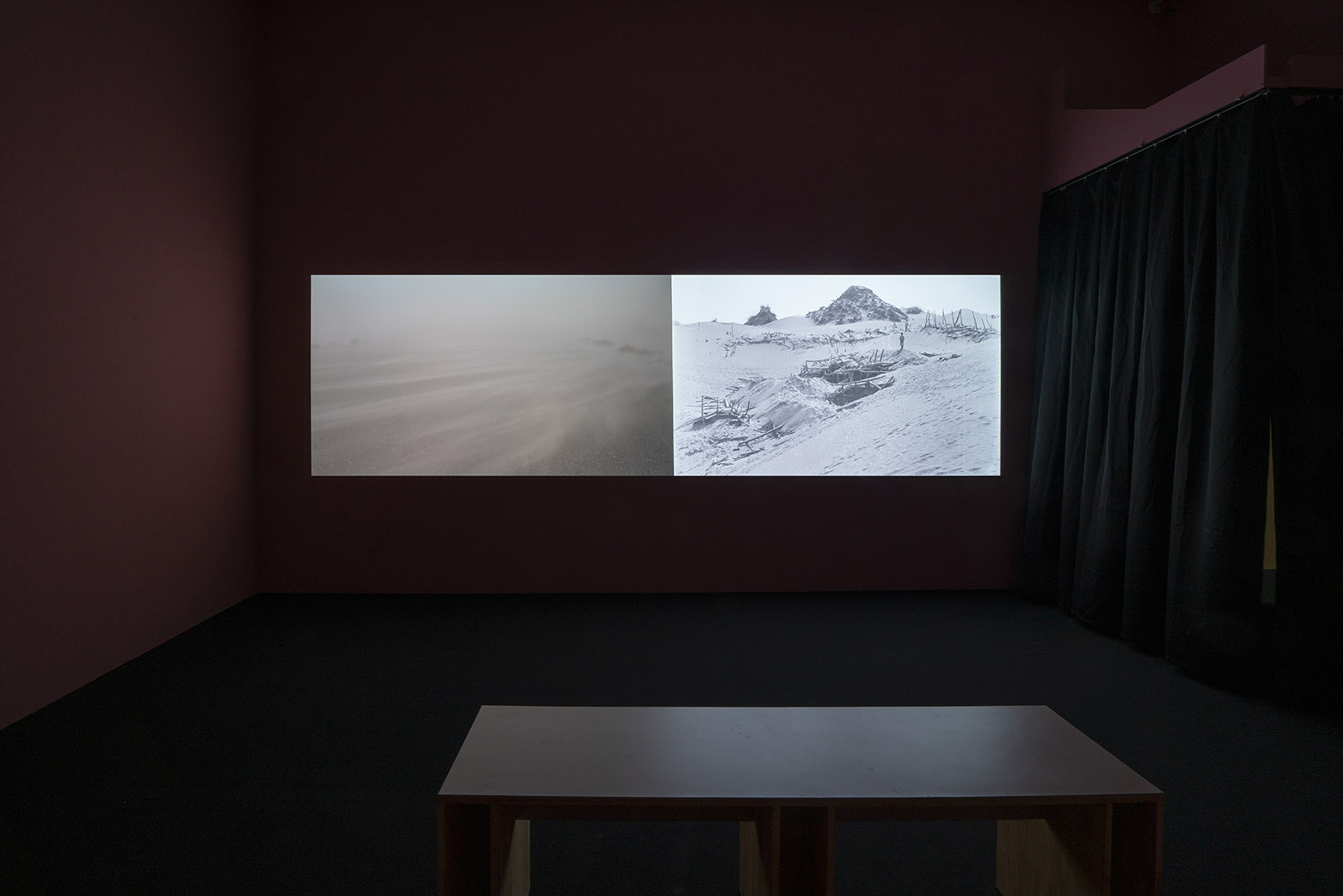

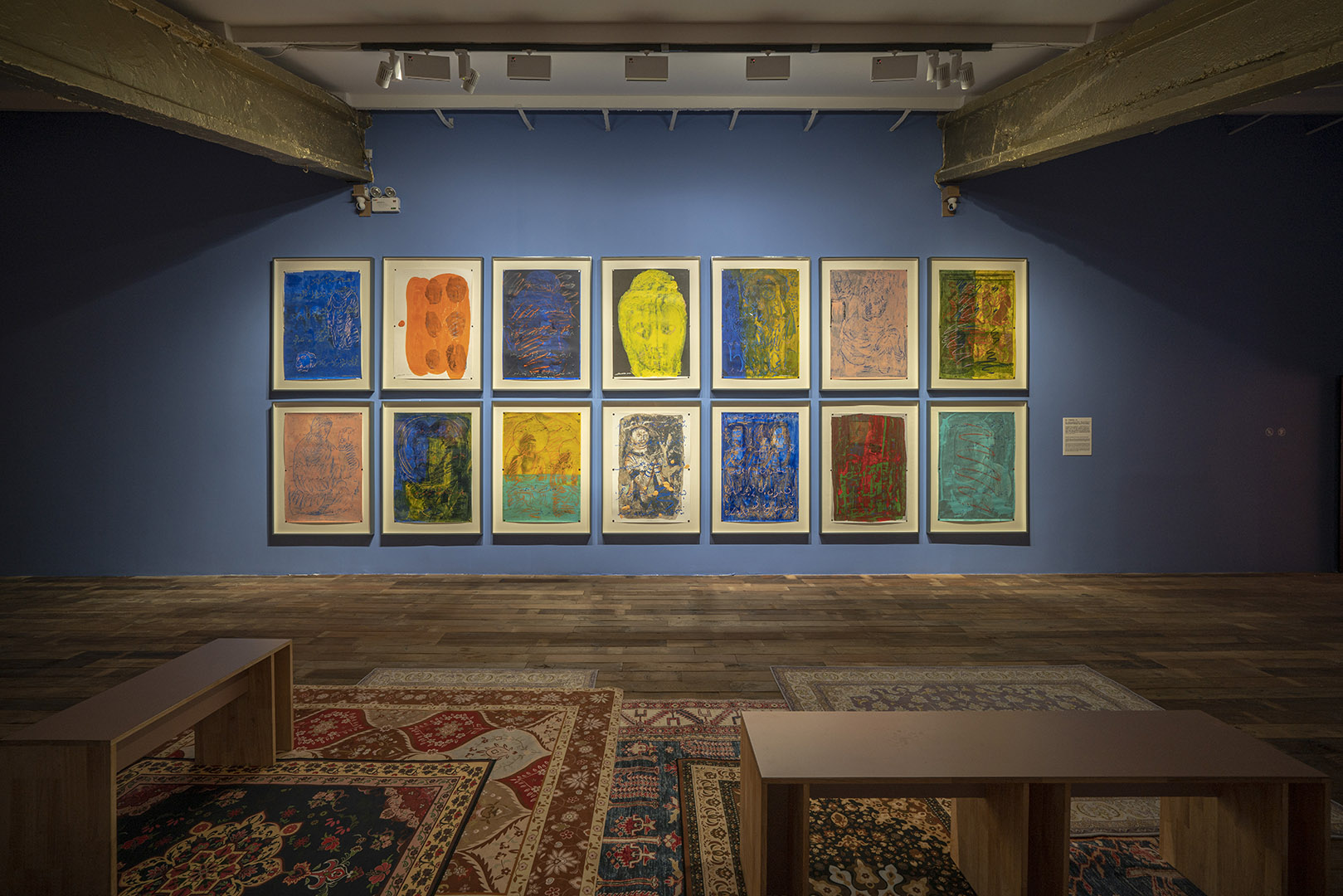
About the Gongbi Painting Institute at the Chinese National Academy of Arts
The Gongbi Painting Institute at the Chinese National Academy of Arts is the only national academic institution integrating research, teaching and creation of gongbi (fine brush) painting in China, supported by abundant professional talents and teaching resources. Through cutting-edge academic research, it aims to endorse artistic classics, propel innovative development of contemporary gongbi painting, and build a systematic, scientific, and comprehensive platform for scholarly and artistic exchange. The institute is now under the leadership of Zhang Jian with He Jiaying being its former director.
Gongbi is an important name card for Chinese art and has been studied and appreciated domestically and internationally. The Gongbi Painting Institute will increase the width and depth of international art exchanges and promote gongbi painting in international cultural discourses. Through research and mutual learning, the Institute also aims to enrich the artistic expression of contemporary gongbi painting, thereby expediting its pluralistic development.
